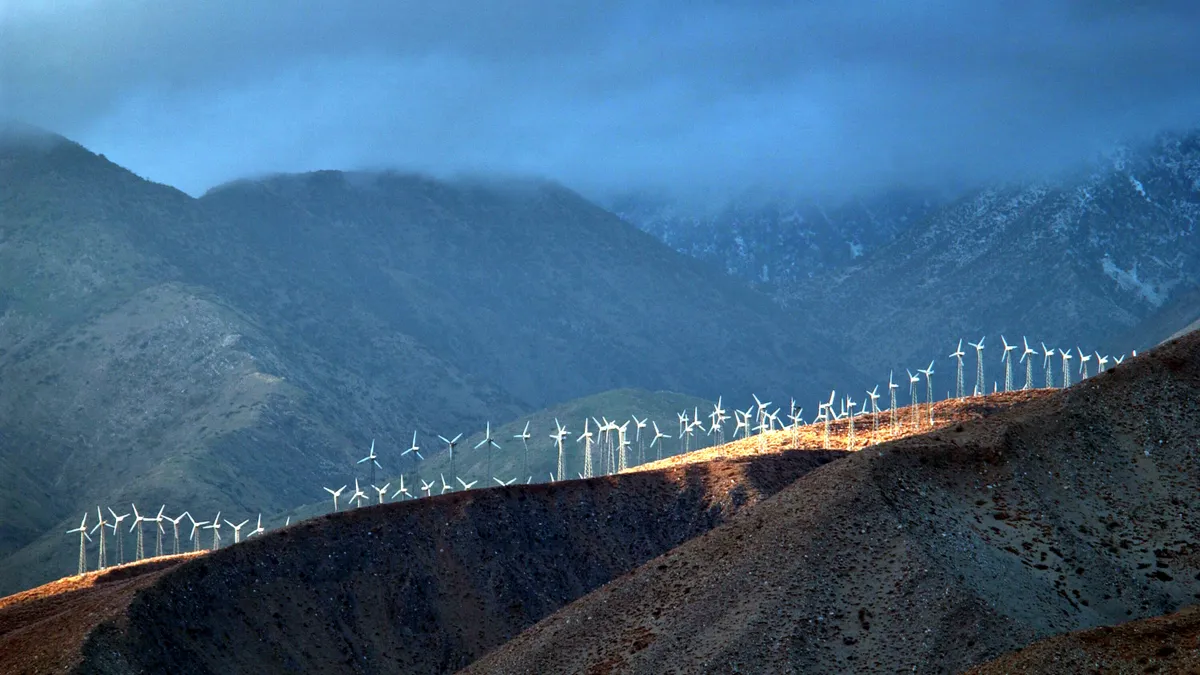Dive Brief:
- California utilities are pushing back against new proposals from the state Public Utilities Commission that would have them procure hundreds of megawatts of fossil fuel resources as part of a larger 11.5 GW package aimed at bolstering the grid after the Diablo Canyon nuclear plant is retired.
- The agency is reviewing two proposed decisions, one of which includes 500 MW of natural gas resources and the other between 1,000 MW and 1,500 MW. Both, however, would only task the state's investor-owned utilities — as opposed to all electricity providers, including community choice aggregators — with the responsibility of procuring it.
- "The Commission's historical approach of imposing on the IOUs disproportionate responsibility for implementation of the state's policy imperatives is inappropriate given the advent of customer choice and completely unsustainable given increasing levels of load departure," an attorney for San Diego Gas & Electric (SDG&E) said in comments filed with the commission last week.
Dive Insight:
The CPUC's proposals aim to ensure that California has adequate resources to maintain grid reliability during the middle of the decade, after the roughly 2,200 MW Diablo Canyon nuclear plant is retired by 2025. In addition, more than 3,700 MW of gas plants are scheduled to retire in the next few years, pushing regulators to look for alternative sources of energy.
Both proposed decisions would have electricity providers procure a collective 11,500 MW of resources for 2023 through 2026, and include additional fossil fuel resources. While one proposes between 1,000 MW and 1,500 MW of additional natural gas by 2025, the other is limited to 500 MW.
But the task of procuring these fossil fuels would go exclusively to California's investor-owned utilities, with the commission noting that community choice aggregators have made it clear they are focused on non-fossil fuel resources, and that retail electric service providers are less likely to make these investments because of shorter customer commitments. Because these resources are needed for system reliability, regulators proposed distributing the costs across customers of all load-serving entities using its cost allocation mechanism.
Pacific Gas & Electric (PG&E), Southern California Edison (SCE) and SDG&E, however, objected to this reasoning in comments filed with the commission last week. An attorney for SDG&E urged regulators to share the responsibility for procuring fossil fuels to all load-serving entities, noting that like the community choice aggregators, the utility too is focused on eliminating greenhouse gas (GHG) emissions from its portfolio. Moreover, SDG&E anticipates that a "significant portion" of its customer load will move to other providers in the next year, and its "business model going forward is not conducive to making the types of investment called for under the [proposals] in fossil resources."
SDG&E also raised concerns about the possibility that requiring only utilities to procure the fossil resources could place disproportionate costs on their customers, including because of climate risk exposure.
"Given the broad and growing consensus that aggressive action to address climate change must be taken in the near term, it is reasonable to expect that GHG emissions will become more rather than less regulated," the utility said, adding that these regulations could saddle it with additional costs down the line.
PG&E — which supported the broader 11.5 GW procurement target — also objected to assigning the task of natural gas procurement to just the utilities; if regulators do choose to go that route, the utility said, they should opt for a minimum 500 MW gas procurement "goal," rather than a requirement.
SCE also had similar concerns, noting in comments that one of the proposals — which would require utilities to procure 500 MW of fossil fuels, with the possibility of an additional 300 MW that commit to using green hydrogen blends — also places restrictions on where that capacity can be contracted from and limits contracts to five-year durations. Reaching the 500 MW requirement with those conditions will be difficult, the utility said, especially given the timeline that regulators are looking at.
"Mandating procurement of quantities that may be close to the total 'feasible' amount would provide market power to these generators and increase costs for customers," SCE said.
SCE recommended that regulators instead allow all electricity providers to procure fossil fuels up to a certain amount, as well as eliminate the five-year contract term limit for natural gas resources.
Most parties agree that California needs to do a major amount of procurement to maintain reliability in the middle of the decade, according to Michael Colvin, director of regulatory and legislative affairs at the Environmental Defense Fund's California energy program.
"It really comes down to questions of what resources, what timeframe, who is paying? Those are the points of contention," he added.
The utilities could face risks if tasked with procuring fossil fuels, in light of Californias' greenhouse gas and renewable energy goals, Seth Hilton, partner at Stoel Rives, said.
"There is a chance that the IOUs won't be fully compensated for that procurement, it won't actually be allocated among all load-serving entities — or that there will be some regulatory impact that will lead to a cost impact," he said.















